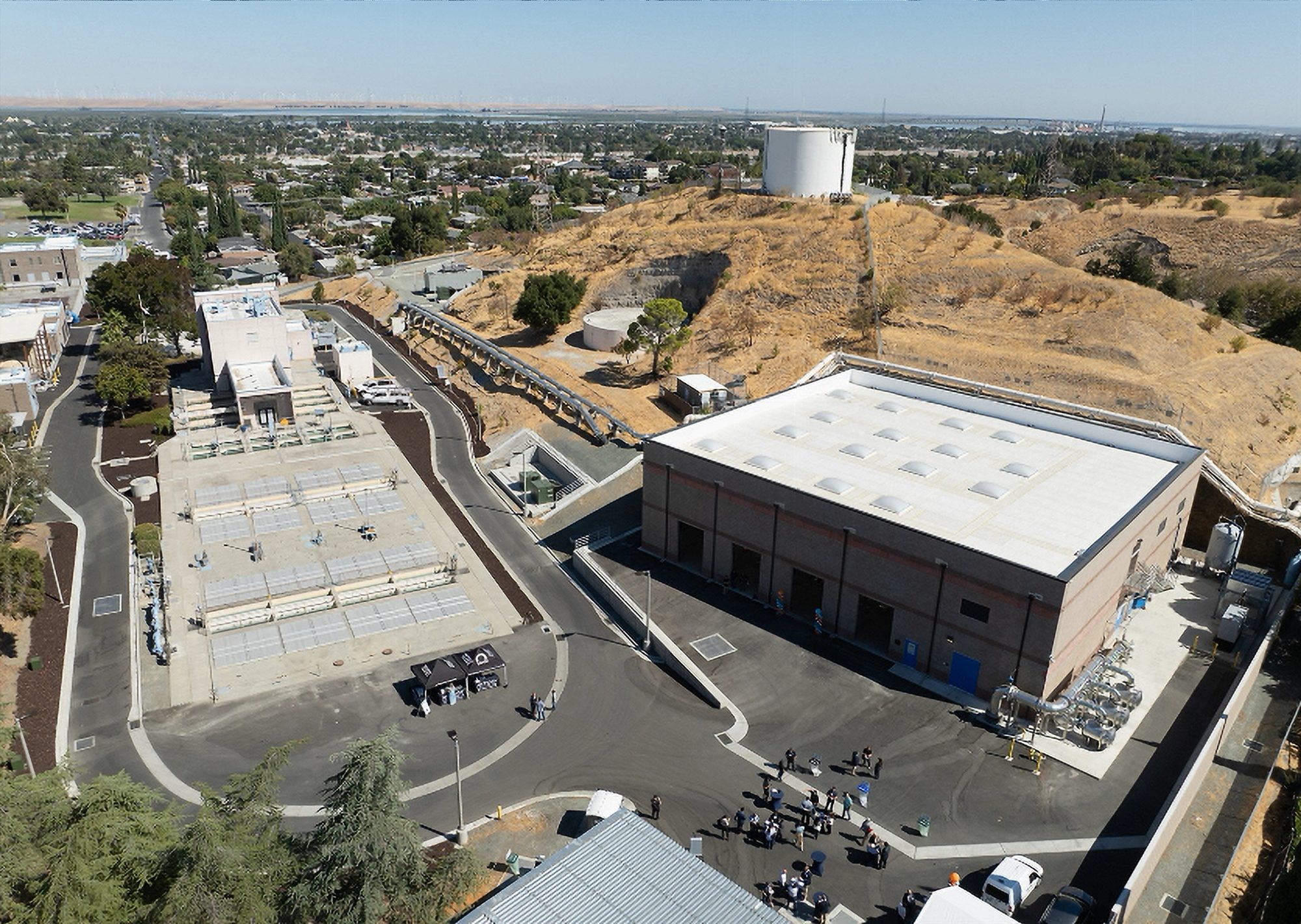- Antioch opens a brackish water desalination facility.
- The plant will supply up to 40 percent of the city’s water.
- It is the first desalination facility in the California Delta.
Friday, September 26, 2025 — Last week, the City of Antioch marked a significant step toward water security with the opening of its new brackish water desalination facility. Supported by $10 million in Proposition 1 desalination grant funding from the California Department of Water Resources and a $60 million low-interest loan from the California Water Boards’ Drinking Water State Revolving Fund, the project will provide up to 6 million gallons of treated drinking water per day.
The facility is located near Antioch’s existing treatment plant and is designed to safeguard local supplies from rising salinity in the San Joaquin River. The city, home to about 112,000 residents, now has a new buffer against the risks of drought and reduced freshwater flows.
How the Facility Works
The Antioch Brackish Water Desalination Plant uses reverse osmosis technology to remove salt from water. This process creates a reliable local source of high-quality drinking water and reduces dependence on imported water and groundwater. Unlike seawater desalination, brackish desalination is less energy-intensive and more cost-effective, making it a practical option for inland communities.
uses reverse osmosis technology to remove salt from water. This process creates a reliable local source of high-quality drinking water and reduces dependence on imported water and groundwater. Unlike seawater desalination, brackish desalination is less energy-intensive and more cost-effective, making it a practical option for inland communities.
According to project leaders, the facility strengthens both the city and the Sacramento–San Joaquin Delta by reducing the impacts of saltwater intrusion and helping stabilize water resources that support farms and communities throughout California.
A Shift Toward Independence
By the end of 2025, Antioch expects the plant to provide up to 40 percent of the city’s water demand. This will reduce reliance on purchased water during extended dry spells, improving cost stability and independence for local residents.
Mayor Ron Bernal described the project as  “a landmark in regional sustainability and independence.” It is the first desalination facility in the California Delta and only the second operating in the Bay Area, following a facility in Newark.
“a landmark in regional sustainability and independence.” It is the first desalination facility in the California Delta and only the second operating in the Bay Area, following a facility in Newark.
Broader Context for California
California’s increasing water challenges—driven by drought, climate variability, and changing Delta hydrodynamics—make projects like Antioch’s more important. Brackish desalination can be located inland, requires less energy than seawater treatment, and generally has fewer environmental impacts.
The Antioch project also demonstrates how combining local infrastructure with state support can create durable solutions. By integrating with existing water treatment systems and pipelines, the project delivers both cost savings and resilience.
The Department of Water Resources continues to fund desalination projects through planning, design, and construction grants for local agencies, along with pilot and research programs.
continues to fund desalination projects through planning, design, and construction grants for local agencies, along with pilot and research programs.
Image via the California Department of Water Resources: A drone view of the City of Antioch’s Brackish Water Desalination Plant, a new facility that uses energy-efficient, low-waste technology to treat Delta brackish water. The plant is designed to supply up to 40% of Antioch’s drinking water, enhancing drought resilience and climate adaptation. DWR provided $10 million in Prop. 1 funds to build the plant. Andrew Nixon / California Department of Water Resources
FAQ
What is brackish water?
Brackish water is less salty than seawater but saltier than freshwater. It often occurs where rivers mix with tidal or groundwater sources.
Why does Antioch need desalination?
The San Joaquin River near Antioch has experienced increasing salinity due to drought and reduced freshwater flows, threatening local water supplies.
How much water will the new facility provide?
The plant is designed to produce up to 6 million gallons per day, meeting as much as 40 percent of Antioch’s demand.
How is brackish desalination different from seawater desalination?
Brackish desalination requires less energy and is less costly than seawater treatment, making it more practical for inland communities.
When will the facility be fully operational?
Antioch expects the desalination facility to reach full operation by the end of 2025.





